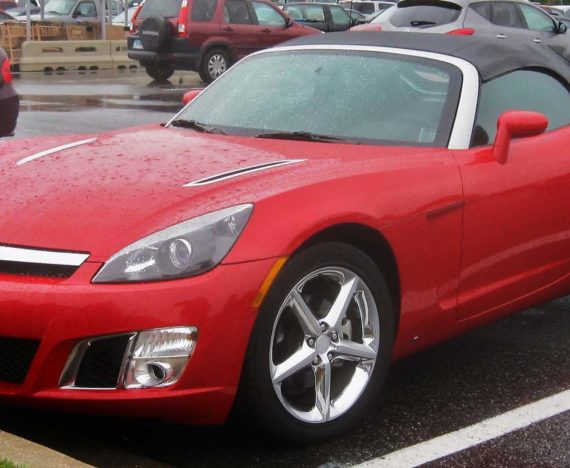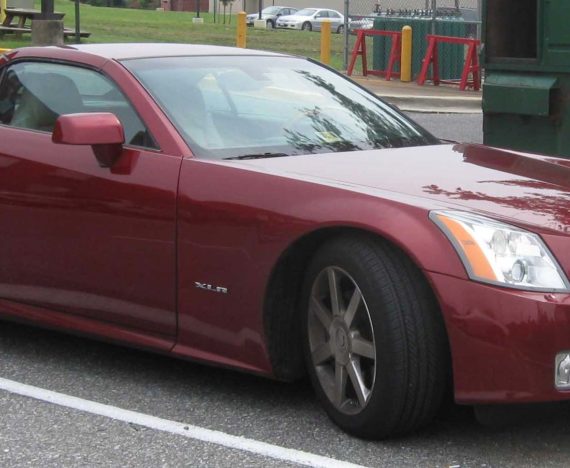2016 was a rough year. There’s been what seems like an abnormal amount of celebrity deaths; David Bowie, Prince, Muhammad Ali, Carrie Fisher, really too many to list here. And then the violence, is it just me or has there been a lot of violence this year? The Orlando nightclub shooting claimed dozens of lives, five police officers lost their lives in Dallas, a truck in Nice ran over and killed 87 innocent people. On top of all these, social issues, things like police brutality and racism, seem to be showing up in the news every few hours. Regardless of your political standings, it’s hard to deny that the U.S. Presidential Elections and Brexit have left a large chunk of the respective populations pretty miffed by the campaigns leading up to the results. A list of ways 2016 has wronged us would not be complete without our old pal Harambe getting a mention either. Oh well, at least 2017 couldn’t possibly be any worse, right?… Right?!
This isn’t exactly news, but Chrysler has confirmed that 2017 will be the final model year for the Dodge Viper, already confirming that 2017 is going to be full of suck. The Viper’s death has been a long time coming, with the shaky launch of the 5th (3rd?) generation in 2013, the poor sales, high production costs, and most recently, a new law in America saying all cars need side curtain airbags (something the Viper would apparently need extensive revisions to accommodate) being the final nail in the coffin. The Viper died once before you know, 2010 was supposed to be the final model year of the car, but due to backlash on the internet and the lack of a real representative halo car in things like movies and videogames, Dodge eventually realized that they sort of missed the ol’ brute and decided on one final go with the V10 monster. Really, it’s lucky we got the Viper at all, as it was almost snuffed out in 1923 when a young Texan was born with severe heart issues.
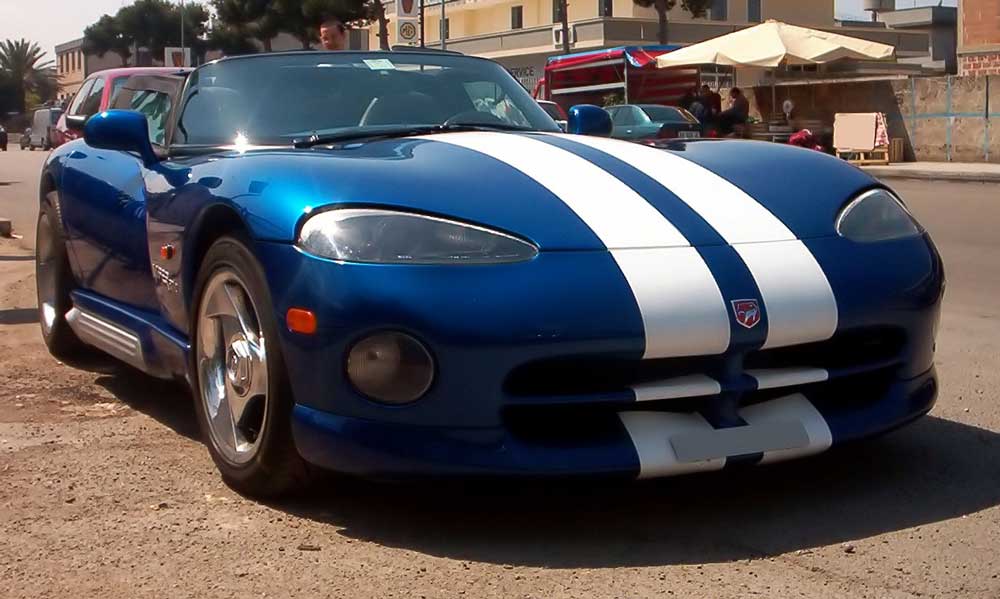
The Viper’s history (clearly) goes back much further than the first model that came out in 1992, but it might go back further than you realized. Carroll Shelby had unfortunately left us back in 2012, but his name and legacy continue to cling to the Ford Mustang. He was a pioneer in performance and the contributions he’s made to the car world run deeper than even Shelby himself would have thought. He spent much of his childhood bedridden and doctors did not expect him to live past infancy. Fortunately, for the motoring world, he did make it through his troubled childhood and because of his close brushes with death, he decided to live every day as if it were his last. He enjoyed a short and unsuccessful racing career in the late ‘50s, but what really put his name on the map was the legendary Shelby Cobra. The Cobra was based off of a small British sports car called the AC Ace. Shelby decided the tiny I6 AC used was insufficient, so he injected a little ‘Murica in the form of Ford’s 289, and later 427, cubic inch V8s. Effectively, Carroll Shelby had invented V8-swapped Miatas some three decades before the Miata was even introduced. He mixed some moonshine into his tea, and it was good.
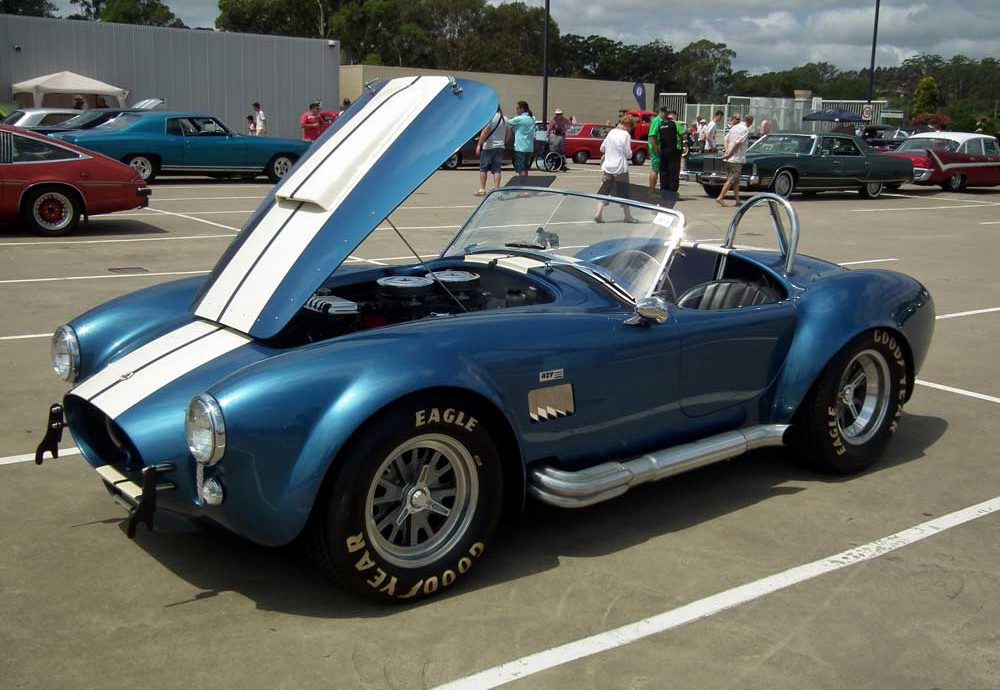
The success found with theses massive engined roadsters propelled Shelby to the front line of American performance cars. Working with Ford as a sort of go-fast consultant, He created machines like the Ford GT40 race car which made Ferrari blush so hard that red is now the only color their cars look good in. The various Shelby Mustangs we’ve been graced with over the years have all had that bit of special sprinkled on them that’s hard to find in other vehicles. Either through aftermarket modification or as a car straight off Ford’s showroom floor, Shelby and Ford are like bacon and eggs… but sometimes you want pancakes with your bacon, ya’know?
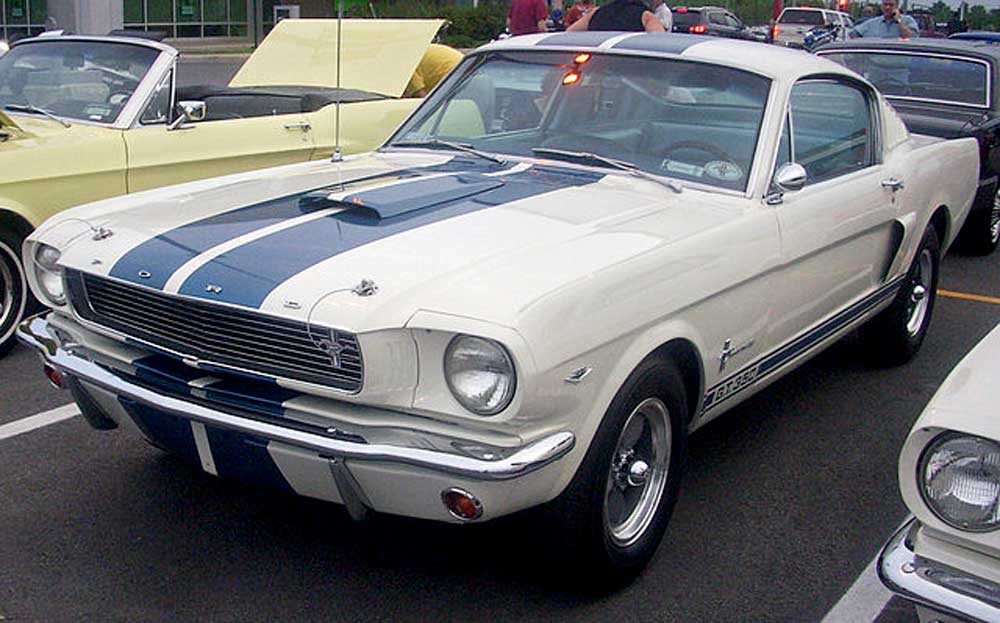
While working at Ford, Shelby had become close to a man named Lee Iacocca. Iacocca wore many hats during his career at Ford, starting as a lower level engineer in 1946 and working his way up to El Presidente of FoMoCo in 1970. He was the man responsible for the Ford Mustang, the good (European) Escort, the classy Continental Mark III, the Mercury Cougar, and even the Pinto. Snicker if you want, but the Pinto was America’s best fighting chance at the invading European and Japanese economy level cars for a long time. After a couple really solid decades for Ford, Henry Ford Part 2 had a falling out with Iacocca in 1979, who jumped ship and swam to Chrysler Island where he ruled as a god until he retired in 1992. After that he just sort of hung out around the Chrysler offices for another 10 or 15 years to make sure things went smoothly. See, in the late 70’s Chrysler was dying, a position they often find themselves in, and Lee’s mission was to pump some life back into the company. Ever hear of the K Car? The K Car was basically what Lee wanted the Pinto to be, the Pinto showed the world that America knew how to make a crappy little econobox, but it wasn’t until the K Car that the world saw America make a good crappy little econobox. He also gave us the magical-sliding-doors-tall-station-wagon Dodge Caravan, and soccer moms the world over rejoiced… until oil got cheap and Chevy figured out how to make the Suburban comfortable anyway. Needless to say, Chrysler figured out how to make cars that were so bad they went full circle and became good again. Sales skyrocketed and Chrysler was taken off their life support. Wait, where’d Shelby go?
Carroll Shelby was apparently more loyal to Lee than he was to Henry, but instead of swimming over to Chrysler Island he just strapped a turbocharger to an Omni and drove there. The ‘80s saw something the people of the ‘60s never saw coming, Shelby Dodges. The system basically worked the same with Dodge as it had with Ford, having Dodge branded performance versions of lesser cars rolling off assembly lines with Shelby’s stamp of approval, and then Shelby had his own even higher performance versions of these cars being sold out of his own shop with his name replacing Dodge’s. Straying from his V8 roots, the majority of Chrysler’s lineup in the ‘80s consisted of FWD 4 cylinder cars that were more concerned with being cheap and efficient than going quick, but just like any other problem Shelby encountered in life, he didn’t let that slow him down. The Charger, Spirit, Shadow, and Daytona all saw versions that could keep up with Camaros and Mustangs of the time, despite having half the cylinders, but my personal favorite had to be the Omni GLH, the “Goes Like Hell”. There was a bit of dabbling in the V8 world with the odd little Shelby Dakota, it wasn’t particularly quick, but the ragtop makes it easy to pick out of a crowd. However, Shelby wanted to live every day as though it were his last, and I guess he was still chasing the high of his Shelby Cobra 427 back in the ‘60s; a car that Shelby, Lee Iacocca, and a handful of other visionaries decided needed a modern interpretation in the late ‘80s.
Now, Ford held the rights to the Cobra name, so unless Shelby wanted to go crawling back to them and convince them that a modern Cobra was a good idea, they needed a new name. That’s why the Viper is called the Viper. It had to be a dangerous snake and they couldn’t call it a Cobra, so the Viper name is basically a big middle finger to Ford and their naming rights. That’s hugely appropriate, because as you’ll see, the Viper was basically one big, constant middle finger to everything around it.
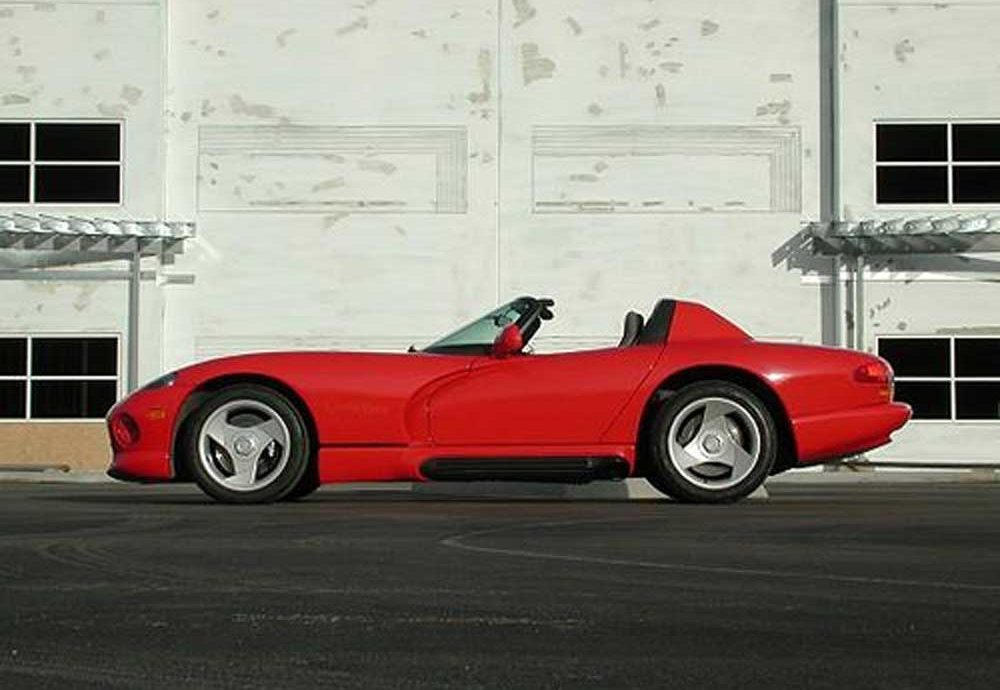
The Viper actually started as a bit of an experiment, showing up as a concept car at the Detroit Autoshow in 1989 and paraded as the sort of spiritual successor to the Shelby Cobra. It was a small and roofless sports car that had a “large” 360 cubic inch V8 under the hood. Public reception was beyond what Dodge anticipated and a production-ready version of the car was pushed over to their “to-do” list. A year later a revised prototype showed up with what would eventually become the Viper’s defining characteristic: a comically oversized V10 engine; one they were working on to be used as a heavy duty truck engine for the Ram, found it’s way under the clamshell hood. At this time, the V10, while undeniably badass, was a little unpractical for a lightweight sports car. So it was shipped off to Italy where some little company Chrysler used to own had set up shop. They built tractors or something, so fine-tuning a truck engine for their performance car was a no brainer.
Lamborghini’s adjustments to the truck V10 were so extensive that it really would not be fair to call the Viper’s V10 a truck engine, despite what the mouth breathing middle school students in the YouTube comments section like to yell about. Now cast almost entirely in aluminum and with a revised cooling system, along with a bit of fine tuning, the 488 cubic inch pushrod V10 ended up making 400 horsepower and 465 pound feet of torque… Laughable by modern standards, sure, but in the early ‘90s those were honest to goodness supercar numbers, and in a car weighing only 3300lbs and lacking the modern electronics and even modern suspension, brake, and tire technologies we are accustomed to today, the Viper was no joke.
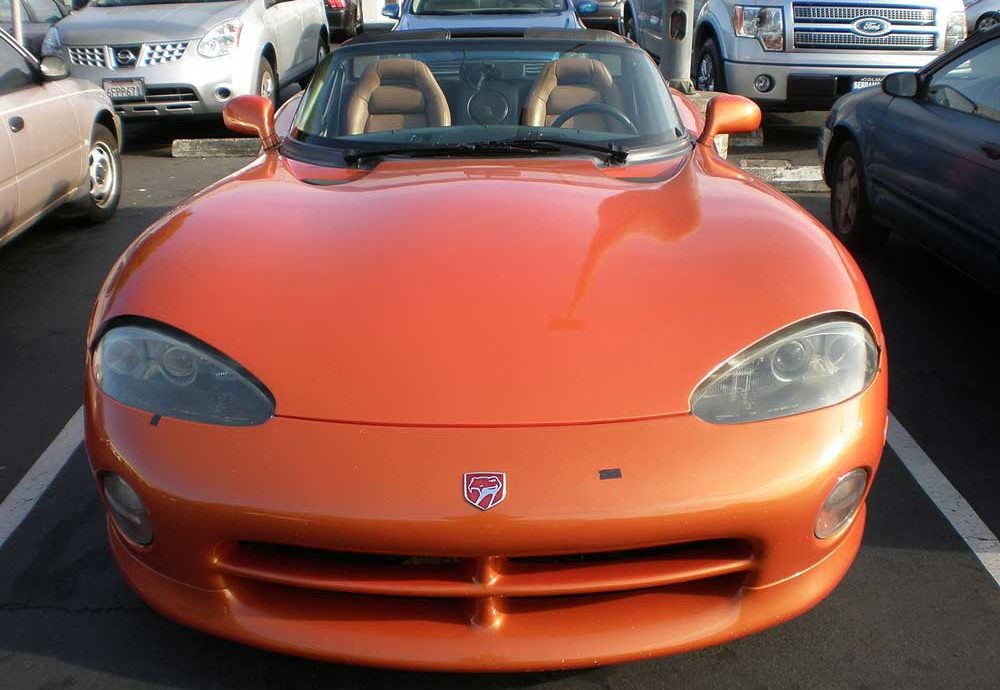
The original Viper was literally designed to be both as inexpensive as possible as well as be the most raw experience you could get in a street legal car. I’m sure one is a result of the other although I am not sure which goal was decided first, either way, the Viper was about as spartan as they came.
Air conditioning? Why would a car without a roof need AC?
Windows? I’m sorry, does it say anywhere in the big book of car laws that a car needs windows?
No? Ok, no windows.
I hope you don’t like your lower back, because the engine and transmission are so large that we decided cocking the pedals to the left a few inches was necessary and now you need to twist your lower body to the left so you can actually drive the car. That’s OK though, you don’t want your legs getting too close to the transmission tunnel anyway, it gets so uncomfortably hot that it will physically hurt you if you have shorts on. Speaking of uncomfortably hot, don’t let your leg touch the rocker panel under the door when you step out of the car, we had to get that authentic “exposed side exit exhaust pipe” look just right which means the one place you can put your leg when stepping out of the car is a genuine safety hazard. Hell, this whole car is a safety hazard!
Being a menace to drive is actually what makes the Viper special, in a twisted sort of way. Earlier I said that the K Car somehow managed to be so bad it was actually good, the Viper had accomplished this in a different way. Now, full disclaimer, I have never actually driven a first generation Viper… or any Viper, for that matter, so I obviously cannot speak from experience here, but I’ve read conflicting reports. Many people describe the car as being a widowmaker, almost having this sentient need to see you broken and bleeding on the sidewalk instead of in the driver’s seat. On the flip side of this, especially lately, I’ve been seeing a lot of “Oh, it isn’t that bad, just know where the limits are and don’t drive like an idiot.” That may be true, on paper, but I have yet to find a reason why you would ever want to own a car like the Viper and not drive like a total idiot. The Viper isn’t dangerous because it’s got too much power and not enough nannies, it’s dangerous because it should make you want to live on the edge, and I can’t decide if that is something we should blame on the cars or on the people who drive them.

The sharp edges of the Viper had been dulled substantially by the time the final generation rolled around in 2013, yet it is still one of the most barbaric cars in its class when compared to other supercars of 2016. I’ve seen people complain that the Viper had grown soft with traction control, a refined interior, a modern media center, and with these things are additional costs. The 2013 models dropped with MSRPs hitting north of $130K USD and that was before horrendous dealership markups. I even saw a few floating around forums at the time with a “2” as the first number on the window sticker. The resurrected Viper was basically DOA, with the 2010 Vipers starting at under $100k, the current Viper fanbase was turned off by the price bump. Anyone else who was already accustomed to spending well north of one hundred G’s on a premium car already have their butts firmly planted in something like a Porsche 911 or an Audi R8. They would never stoop so low as to be seen in a Dodge. Dodge attempted to recoup some of their losses in 2015 with a massive price cut to the Viper, $15 off meant they now started at $85K, they credited buyers of 2013 and 2014 Vipers $15K as an apology, and they threatened to stop selling Vipers to dealerships who were marking the cars up… Alas it was too late, the damage had been done. It demolished the Vipers small used market, trying to sell a 2013 Viper GTS with 15,000 miles on it would be a hard bargain when a brand new, discounted GTS could be had for the same price. 2013 and 2014 Vipers sat in dealership showrooms for a long time, dealerships didn’t want to mark their cars down initially. Now I’m seeing used 2013 models popping up in the same price range as the late 2000’s models, making them much more attractive to the people who have owned previous Vipers.
The current gen Viper is cushy compared to older Vipers, but it is still a harsh experience compared to many other supercars. Is it too harsh to attract supercar buyers from other brands? Maybe it grew too soft to keep the masochistic owners of older Vipers coming back for more? Some say that if the Viper had been more accommodating to the masses, it wouldn’t be on death row now. A huge percentage of Corvettes sold in 2016 had automatic transmissions, somewhere in the 75% range, and close to 70% of the overall production were the Stingray flavored variant. Most supercars now don’t even give you the option of a manual transmission, and the manufacturers who do will make a point of telling you that the automatic or DCT options are the far superior ones. The only transmission offered in the Viper is the Tremec TR6060 6 speed manual, the car has a notably heavy clutch and shifter throw so it is almost understandable why a lot of the older gentlemen I see in automatic Z06s chose that over the Viper. What if Dodge made the Viper even softer, the car is often described as being an assault on your senses, so what if they made the exhaust quieter? Gave it a less powerful optional engine so you weren’t snapping your neck every time you punched it? Put the Hellcat’s 8 speed in there because they’ve already proven it can handle the power and shift faster than the 6 speed?

The Viper, in my opinion, ultimately dies because it was not made for our world. Even after the fresh coat of luxury brought on by the latest generation it is still an angry brute compared to its competition. It uses an engine based off a small block V8 birthed out of Chrysler some time in the 1960s. It doesn’t use turbochargers or electric motors to help make power. It only sends power to the rear wheels instead of the AWD configurations many cars of this caliber now strive for. It doesn’t even use any sort of fancy torque vectoring to help it corner. In a world full of DCTs, the Viper has chosen the old way, the worse way. That makes the ACR level trim that much sweeter.
The Viper has always existed as a sort of middle finger to the automotive world. Its very conception was a middle finger to Ford. It’s been a middle finger to the critics who condemned it for being too rough, a middle finger to the occupants it battered, and a middle finger to the norms of the modern age where something like a naturally aspirated 8.4L V10 is just garish. The ACR was the final middle finger, the biggest middle finger, to every other supercar around it. In the Viper’s last breath, it gutted itself and wore an aerokit that will go down as a legend alongside its winged Superbird and Daytona Charger forefathers, which carried on to break production car lap records for some dozen tracks across America. Forced induction? All wheel drive? Computer aids? Quick shifting dual clutches? Electric motors? All crumbled before the Viper ACR. Cars with hundreds more horsepowers costing 4, 5, 6 times more money, had to bend the knee as the ACR passed them. The ACR did things the old way, the Viper way. It took technologies and knowledge we had in the 1960s and turned them to 11. But the Viper did not adapt, and now it must die. Beautifully enough, I would almost say that the closest thing we’ll have to the Viper after 2017 will be the Shelby GT350, despite evolving from a different branch of the same tree, it will be one of the few manual only, naturally aspirated, harsh cars that have a strange engine mounted in front of the passengers that sends power to the rear wheels.
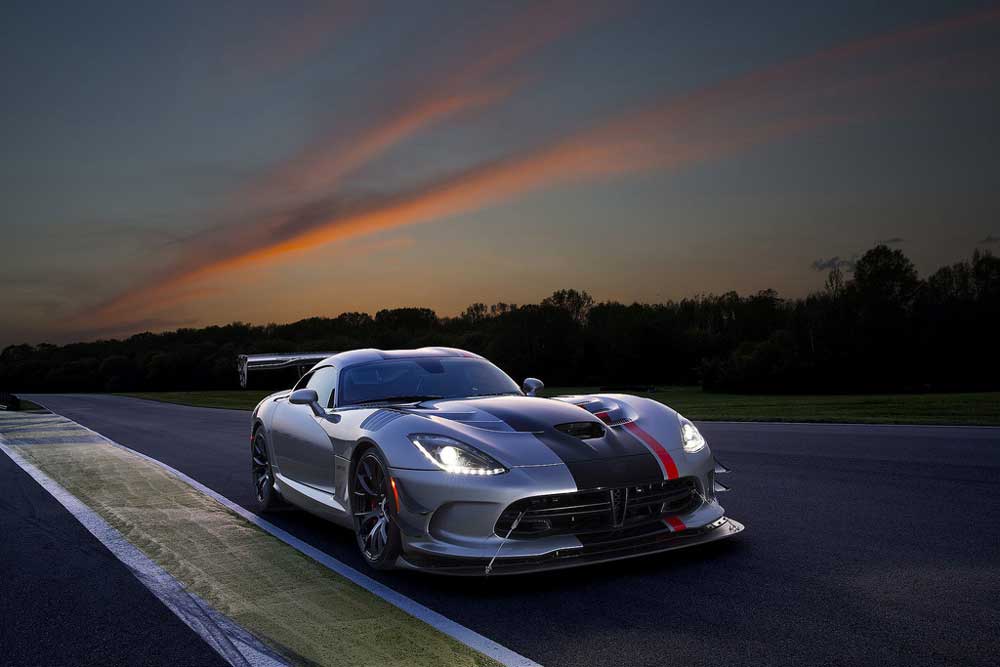
I hate to be a stereotype here, but the naturally aspirated, manual transmission, high performance cars are a dying breed, and losing the Viper is a huge hit to that demographic. Some say the Viper should have adapted, maybe use a smaller displacement V8, or an automatic transmission… but then, would a Viper without a V10 still be a Viper? Would a Viper that said “I gotchu bro” and held your hand around a racetrack be a real Viper? Despite never having driven a Viper, until I drive one anyway, I hold the Viper in the highest regard and consider it to be at the very tippy top of my Dream Car list. The fact that I’ll never get to own a brand new Viper does sadden me deeply, but I came here today hoping to celebrate the life of the Viper. If giving it a smaller engine or making it more accessible to the old farts I see putting around in slushbox Corvettes at car shows was the only way for it to survive, I’m content to see it die. Better to die the hero than live on to see yourself become the villain, right?



